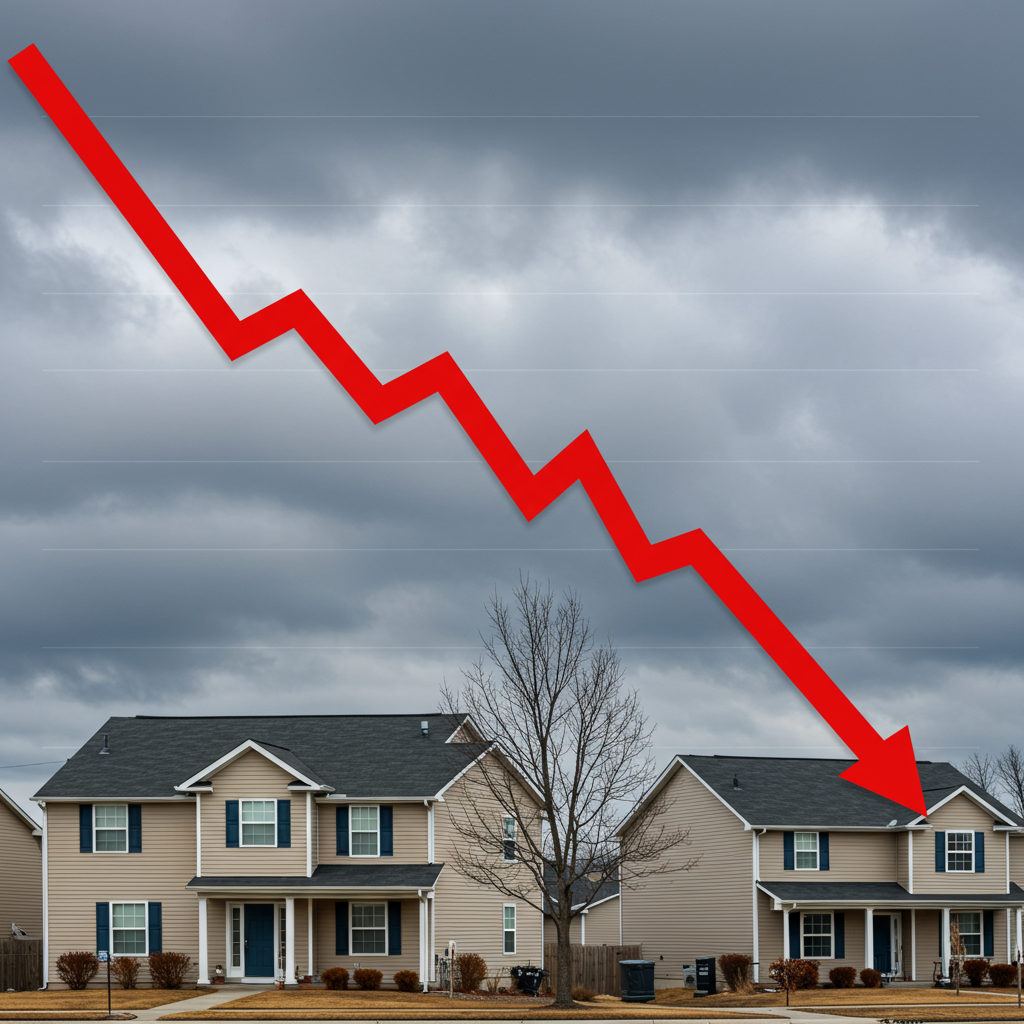US Housing Market Faces Slump: May Sales Hit 16-Year Low
The U.S. housing market continues to navigate challenging waters, with existing home sales posting their slowest May pace in 16 years, mirroring activity last seen in 2009. This persistent slump follows a similarly weak April, which also marked a 16-year low for that month. While sales saw a slight month-over-month uptick of 0.8% in May, they were still down 0.7% compared to May of the previous year.
Industry experts describe the current market as “very stable, but at the sluggish sales activity level.” Despite millions of jobs added to the economy, overall sales volume remains significantly below pre-pandemic levels, hovering around 75% of past activity.
Affordability Remains the Biggest Hurdle
The primary culprit behind the prolonged slowdown is the severe affordability crunch facing potential homebuyers. Data reveals a widening gap between rising home prices and stagnant wage growth. Since May 2019, median home prices have surged by an estimated 52%, while average wages have increased by only about 30% over the same period.
This disparity, coupled with elevated mortgage interest rates, has dramatically increased the cost of homeownership. The monthly payment for a median-priced home, including the prevailing interest rate, has roughly doubled from approximately $1,000 before the COVID-19 pandemic to over $2,000 today. This doubling of monthly costs acts as a significant barrier, hindering many prospective buyers from entering the market.
Rising Inventory Shifts Dynamics… In Some Areas
One notable shift in recent months is the significant increase in housing inventory. The number of homes available for sale is up by more than 20% compared to a year ago, reaching its highest level since at least September 2020 or 2019 depending on the metric. This rise is observed across all regions, with the West and South seeing particularly large upticks.
This boost in supply is starting to move the needle in certain markets, creating more favorable conditions for buyers. While nationally there may still be more buyers than sellers (one estimate putting the gap at 34% more buyers than sellers in April), the increased selection means homes are taking slightly longer to sell (averaging 29 days in April, up from 26 a year ago), and buyers are gaining negotiation leverage, particularly in areas with ballooning inventory like parts of the Sunbelt.
Some previously hot markets in the Southeast and Southwest are now experiencing a notable surplus of listings, forcing sellers to adapt. In these areas, sellers are increasingly resorting to:
Slashing asking prices
Becoming more willing to sell at lower numbers
Offering concessions to attract hesitant buyers
The condo market appears especially challenging for sellers, with sales down 10% year-over-year in May and data suggesting significantly more condo sellers than buyers in the market.
Price Growth Slows, But Declines Appear Regionally
Despite the sluggish sales pace and rising inventory, national home prices have continued to appreciate, albeit at a much slower clip than during the pandemic frenzy. The national median single-family home price reached $427,800 in May, a modest 1.3% increase from May 2024. For condos and co-ops, the median sales price was $371,300, up 0.7%.
The overall year-over-year price growth of 1.3% across all housing types represents the slowest rate of price increase since June 2023. While national averages show slight growth, this masks significant regional variation. Data indicates that 24 of the 100 largest metro areas saw year-over-year price declines in May, with the majority of these concentrated in the Sunbelt metros where inventory has surged.
Why Buyers Remain on the Sidelines
Many hoped the traditional spring housing market would see a rebound, with more people listing their homes and buyers jumping in. However, buyers have largely remained hesitant. Beyond the obvious affordability issues and high mortgage rates (which have remained near 7% or just above year-to-date highs), prospective buyers cite concerns about:
Potential job losses
Stock market volatility
General economic uncertainty
This caution is keeping many would-be buyers in a “holding pattern,” choosing to wait for more favorable conditions.
Adding to the market’s complexity, the new construction sector is also experiencing a slowdown. Single-family building permits, starts, and completions saw declines in April compared to a year ago. Builders face their own challenges, including volatile material costs (partially due to tariffs on materials like lumber) and increased competition from the rising supply of existing homes, leading some to cut prices on new builds to compete.
Looking Ahead: Hope Hinges on Rates
The Federal Reserve recently held interest rates steady but signaled the possibility of cuts later in the year. While Fed rate cuts don’t directly control mortgage rates, they can influence them.
Experts suggest that if mortgage rates decrease in the second half of 2025, this could provide a much-needed boost to home sales nationwide. Combined with factors like continued income growth, healthy inventory levels, and a strong job market, lower rates could help unlock some of the pent-up demand currently stalled by the affordability crisis, potentially pulling the market out of its current 16-year low trajectory for seasonal sales activity.




